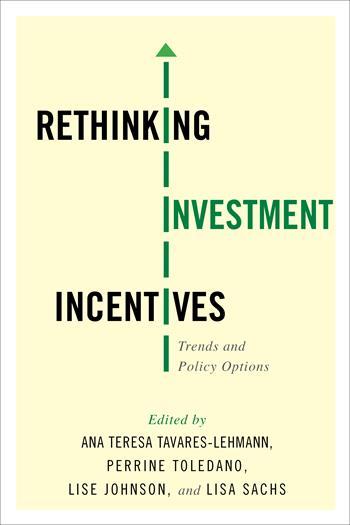Experts Examine Costs and Benefits of Investment Incentives
By Nathan Lobel
January 10, 2018

Before he had even assumed office, President-Elect Trump flew to Indianapolis to convince Carrier, an air conditioning manufacturer, not to outsource 2,000 factory jobs to Mexico. In late November 2016, Carrier agreed to keep about 1,000 jobs in Indiana in exchange for a $7 million incentive package from the state. By May 2017, though, Carrier announced that they were going ahead with plans to outsource the jobs, and would begin layoffs in July.
As the Carrier laid off workers in Indiana, Wisconsin Governor Scott Walker finalized an agreement with the Taiwanese electronics manufacturer Foxconn to provide a $3 billion in tax incentives to attract a new factory near Milwaukee and exempt Foxconn from having to comply with state environmental regulations. In exchange, Foxconn advertised that the plant could employ up to 13,000 people in five years. Nevertheless, the state’s nonpartisan Legislative Fiscal Bureau estimates that Wisconsin is unlikely to recoup its investment for twenty-six years, until 2043.
Most recently, the online retail giant Amazon announced that it would open a second headquarters in 2019, and would solicit host city bids across North America. In all, Amazon received 238 bids from 43 states (and Puerto Rico and Washington D.C.), seven Canadian provinces, and three Mexican states. These bids were both creative and extreme, including returning income taxes paid by employees to the company, offering hundreds of millions of dollars of free land and property tax exemptions, and giving Amazon partial authority over how the city would spend municipal revenues.
These stories raise important questions: do such incentive packages actually work, and are they worth the costs? That is, do they achieve their goals of attracting and keeping businesses, generating economic development, and achieving other policy goals? If so, are governments and citizens getting what they’re paying for? These questions are explored in Rethinking Investment Incentives: Trends and Policy Options edited by Ana Teresa Tavares-Lehmann, Perrine Toledano, Lise Johnson, and Lisa Sachs (Columbia University Press, July 2016). In Rethinking Investment Incentives, several distinguished experts examine trends in incentive packages around the world, identifying issues and proposing best practices to help governments get the most bang for their buck.
Governments’ use of incentives to attract and hold onto corporate investment is pervasive; in one of the chapters of Rethinking Investment Incentives, the authors estimate the value of incentives packages in the United States alone to exceed $50 billion each year. Incentives are pervasive outside of the U.S. as well; the volume also catalogues the extensive use of tax exemptions and other subsidies in emerging economies, the EU and Australia.
Surprisingly, Professor Christian Bellak finds that while use of investment incentives is widespread, incentive packages have only a minor impact on attracting investment, especially compared to factors like strong government institutions, good infrastructure, and the presence of natural resource deposits. Investment incentives, he suggests, are less of a carrot, drawing a company to one region over another, than a cherry on top, sweetening an investment decision already-made based on other factors. According to Chris Steele, an author of Chapter 6, “For every investor lured by incentives, there are many others that probably would have gone ahead in the same location even if fewer incentives were offered, or none at all.”
Even if or when effective, incentive policies are often poorly designed. The authors find that many governments give away vast sums of tax-payer money without conducting cost-benefit analyses, monitoring whether the incentives achieve their intended development benefits. Few governments include accountability mechanisms to ensure that subsidies are conditional on benefit delivery.
Taking a step back, many of the authors examine the effect of incentives on the macro, rather than micro, scale. They find that countries, states, and cities feel the need to compete with neighbors to capture investment (and the positive externalities it can provide). This competition is a race to the bottom; with generally no added benefit to the macro economy, the competition diverts capital from public expenditures, encourages governments to cut necessary labor, public health, and environmental regulations, and disadvantages jurisdictions with fewer resources to offer. Investors like Amazon can feed this frenzy.
All this points to a muddled picture for the efficacy of investment incentives. While strategically designed incentives could help attract and shape investment so as to maximize development impacts, too often governments, pitted against one another by experienced corporate negotiators, are short-sighted, hoping to attract investment with grand promises that are short on empirical backing or strategic design. Before designing incentives, governments should consider exactly how investment and investors could further their broader economic development plans. And so far as is possible, higher levels of government should step in to prevent harmful and wasteful incentive competition within their borders and in coalition with international peers, and invest instead in the fundamentals of an attractive economy.
Rethinking Investment Incentives: Trends and Policy Options is an essential resource for understanding what the increasing mobility of capital means for the cities, states, countries and regions that seek to attract, direct, and retain investments. Complementing the edited volume, the Columbia Center on Sustainable Investment has launched a series of short videos from the book’s authors, summarizing the important messages from each chapter.
Nathan Lobel is the Special Assistant to the Director at the Columbia Center on Sustainable Investment



